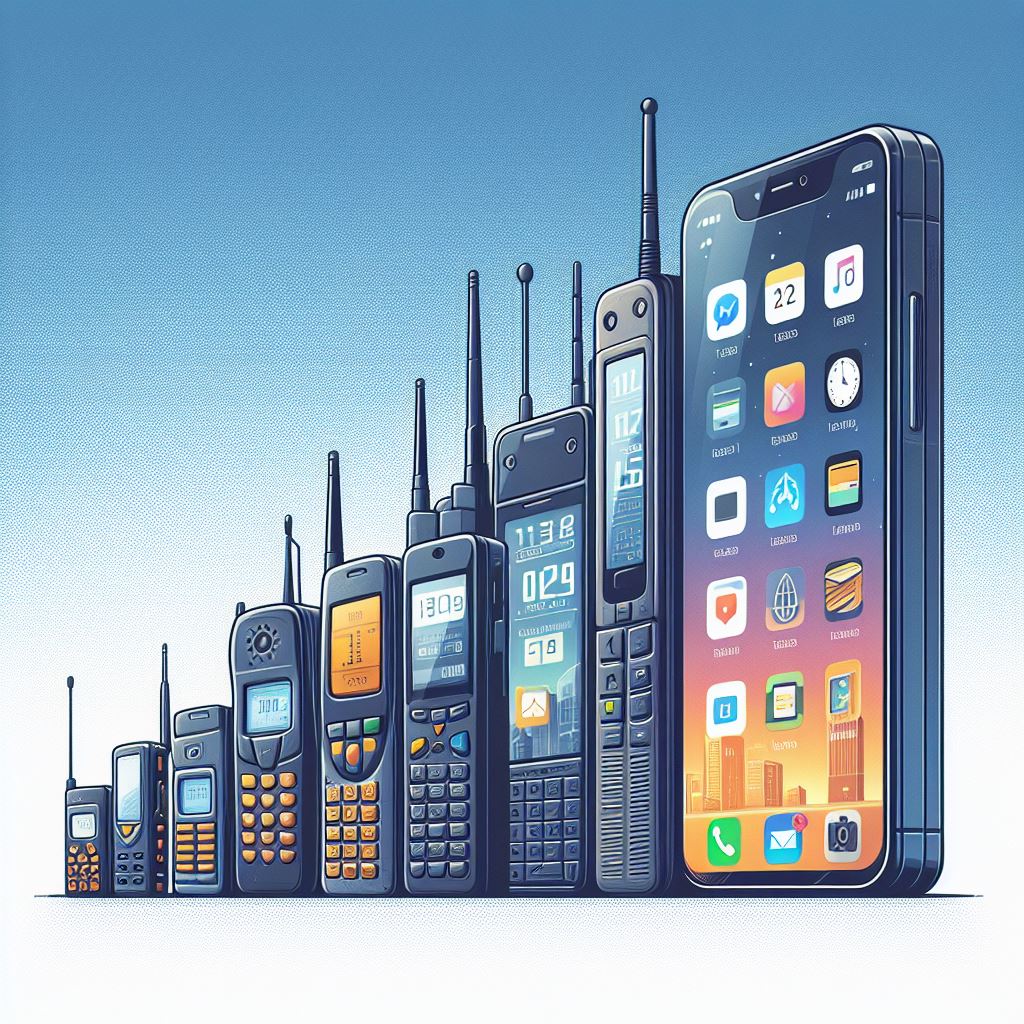The transition from basic mobile phones to sophisticated smartphones marks a significant milestone in the evolution of technology, reshaping the way we communicate, work, and interact with the world around us. Spanning several decades of innovation and advancement, this journey from the era of mobiles to the age of smartphones represents a remarkable transformation in the realm of personal computing and connectivity.
The Era of Mobile Phones:
The concept of mobile communication can be traced back to the early 20th century with the invention of the first wireless telephony systems. However, it wasn’t until the 1980s and 1990s that mobile phones began to gain widespread popularity and accessibility, thanks to advancements in cellular network infrastructure and handset technology.
The early mobile phones, often referred to as “brick phones” due to their bulky and heavy design, were primarily intended for voice calls and text messaging. These devices featured monochrome displays, limited battery life, and basic functionality, yet they represented a revolutionary leap in personal communication, providing users with unprecedented mobility and convenience.
As the mobile phone market expanded, manufacturers introduced a diverse range of form factors, features, and capabilities, including the introduction of color displays, built-in cameras, and multimedia messaging. With each successive generation, mobile phones became more compact, affordable, and feature-rich, paving the way for the next phase of technological innovation—the era of smartphones.
The Rise of Smartphones:
The dawn of the 21st century witnessed the emergence of a new breed of mobile devices known as smartphones, which combined the functionality of traditional mobile phones with the power of computing and internet connectivity. While early smartphones such as the BlackBerry and Palm Pilot offered rudimentary email and web browsing capabilities, it was the introduction of the iPhone by Apple in 2007 that revolutionized the industry and ushered in the era of modern smartphones.
The iPhone, with its sleek design, intuitive touchscreen interface, and robust ecosystem of third-party apps, set a new standard for mobile computing and user experience. Its innovative features, including the App Store, multitouch gestures, and accelerometer, transformed smartphones from mere communication devices into versatile multimedia platforms capable of running a wide range of applications and services.
Following the success of the iPhone, competitors such as Google’s Android platform entered the market, offering users an alternative ecosystem of smartphones with customizable interfaces, open-source development, and integration with Google services. This fierce competition fueled rapid innovation and drove down prices, making smartphones more accessible to consumers worldwide.
The Evolution of Smartphones:
In the years since the introduction of the iPhone, smartphones have undergone continuous evolution and refinement, incorporating cutting-edge technologies and features that were once the stuff of science fiction. From high-resolution displays and advanced cameras to biometric authentication and augmented reality, modern smartphones have become indispensable tools for work, entertainment, and social interaction.
The proliferation of mobile apps and services has further enhanced the utility and versatility of smartphones, allowing users to access a vast array of content and functionality with just a few taps of the screen. Whether it’s navigating with GPS, streaming video on demand, or managing finances with mobile banking, smartphones have become integral to our daily lives, blurring the lines between the digital and physical worlds.
Looking Ahead:
As we look ahead to the future, the era of smartphones continues to evolve with the advent of emerging technologies such as 5G connectivity, artificial intelligence, and the Internet of Things (IoT). These advancements promise to further expand the capabilities of smartphones, enabling new applications and experiences that were previously unimaginable.
From humble beginnings as simple communication devices to powerful pocket-sized computers, the journey from the era of mobiles to the age of smartphones represents a testament to human ingenuity, creativity, and adaptability. As smartphones continue to shape the way we live, work, and connect with one another, their impact on society and culture will undoubtedly be felt for generations to come.

